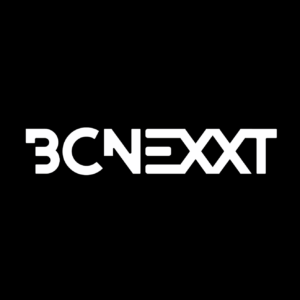There have been two key factors which have accelerated the move away from linear TV towards digital platforms. The first is the explosion of on-demand access. Consumers now expect to dictate schedules and watch their favourite content whenever they want, fitting their viewing around their lifestyle. The other has been an increase in variety, with audiences expecting a wider choice of content types and formats.
Both factors have had an impact on the overall volume of content needing to be created but have also ramped-up the emergence of new genre-defining forms of entertainment. So, with all this content flooding our screens, it is clear that the way consumers engage with video has been altered forever.
Content creators have been pushed to match viewers’ expectations. Audiences are looking for seamless entertainment experiences that move them from one thing to the next, without friction. Platforms don’t just need to mirror consumers’ taste on a surface level, but also take them beyond what they were originally searching for, allowing them to discover something new.
Shifting Consumption Trends
Recent insights from Forbes highlight how crowded the video subscription market is becoming. “The average U.S. consumer now pays for four different streaming video subscriptions. Nearly one-quarter of U.S. consumers (23%) have added at least one new paid streaming video service since the pandemic began.”
But broadcasters and content owners aren’t just competing with like-for-like platforms anymore. They are competing for viewers’ attention across a whole landscape of digital products and services. The result is a high-stakes attention economy, where only the innovative will survive.
While audiences are moving away from a loyalty mindset, they are prepared to make a financial commitment to quality content. Just prior to the outbreak of the pandemic, Neilson Sports highlighted that the next generation of sports fans won’t fit into a traditional mould. “Our research shows GenZ consumers are not averse to paying for premium content, but they are increasingly expecting a tailored value proposition – that is, they want to be able to pay purely for what they want, where and when, and without any long-term contractual commitment.”
A Change in Outlook
The impact of increased variety on the success of entertainment and social platforms cannot be overstated. It is no longer enough to lay on a limited menu of options for audiences, with a ‘take it or leave it approach’. So, when it comes to live events, sporting events in particular, why is it that some broadcasters and content owners are lagging behind the curve?
The mindset for live sports still feels very linear – the match starts at this time, and it ends at this time, and the main event is book-ended with some commentary and analysis. This is a world away from the immersive potential that live sports offer and feels like a missed opportunity. By increasing the number of feeds distributed from a live event, content owners open a host of viewing format options, which can be packaged for different markets. By diversifying offerings with behind-the-scenes footage, finding new angles on build-up and follow-up coverage and developing VIP event experiences, content owners can grow audience engagement and explore new revenue opportunities.
But while consumers are clearly open to change, content owners seem less prepared to transition. The challenges of moving feeds around the globe are significant and the traditional workflows of satellite and fibre have remained the go-to for many content owners. But there may be room for innovation and a move towards more collaboration.
Broadcasting Restrictions
In many cases, there is a clear reason for a lack of supplementary content to support and enhance live sports events and expand viewing options. Until recently, the downstream cost profile of delivering live content was often prohibitively expensive for all but tier one sports. Therefore, booking additional satellite transponder space for multiple feeds was completely out of reach financially for many content owners. Also depending on the scale of the broadcast operation, content owners would need sizable infrastructure in place to be able to send, receive and process satellite signals.
Not only does satellite’s cost-prohibitive nature become challenging for content owners looking to diversify offerings, broadcasters in global territories can also experience barriers relating to operating in a region that sits outside the standard satellite footprint. In these cases, the value of the content can be overshadowed by the cost of the technical fees the taker needs to commit to. This means that even high-profile events don’t always get the right exposure in new regions which could be highly beneficial for engagement.
Hybrid Opportunities
So how can broadcasters and content owners respond to the seemingly insatiable interest in fresh content, whilst managing the costs and infrastructure challenges associated with delivering live video?
New developments in IP delivery mean that broadcast-grade feeds can be moved from any location to any destination, at a significantly lower cost than with traditional methods. Content owners can now transport live linear and OTT content from point-to-point or point to multipoint, with the option of self-serve or fully managed content services.
The availability of IP means it is ideally positioned to respond to an increase in the overall demand for live sports content. Until recently the ability to decouple responsibility for sending and receiving content had been the missing piece of the puzzle. But IP can now scale up to large and complex operations with ease. In addition, there is the potential to maximise reach using established teleport services in geographically diverse regions; combining IP and satellite infrastructure to offer the best of both worlds.
Using the right combination of broadcast-grade tools will allow content owners to diversify and monetise their offering. Content owners can assess the commercial value of different feeds for a live event and decide on the best delivery method for their requirements. Perhaps using satellite for the main ‘world’ feed but then utilising the agility of IP for multiple supplementary feeds, in order to help meet content demand.
The Next Step
With audiences adapting their viewing habits and favouring more agile and customisable methods, content owners need to retain their interest. As with other consumer supply and demand patterns, video content production must satisfy the needs and scale of consumption. While the platforms for consumption have changed significantly in recent years, the widespread means of delivery hasn’t altered as much – that needs to change.
Rather than unnecessarily limiting audience reach, and missing the opportunity to expand into new territories, content owners can utilise hybrid workflows across a CDN 2.0. Embracing a new collaborative era of content delivery, as well as championing holistic live experiences for fans.









